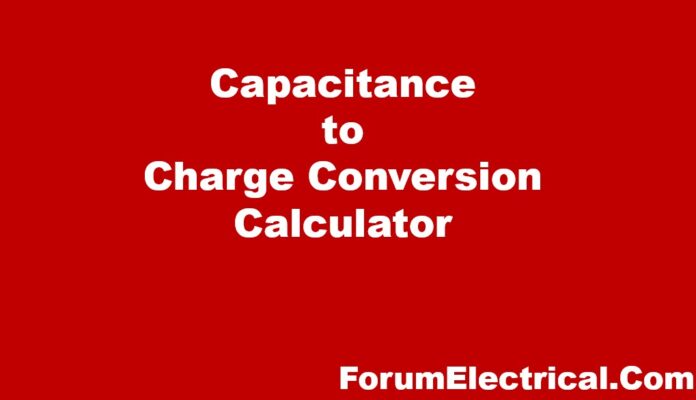Calculator
How to Calculate Electric Charge?
Coulombs are the units of measurement for electric charge, which is an inherent property that represents the amount of charge that is contained within an electron.
The unit of measurement for one coulomb is one ampere-second.
What is Capacitance?
The capacity of a component or circuit to accumulate & store energy in the form of an electrical charge is referred to as its capacitance.
To calculate capacitance, divide the magnitude of the electrical charge by the difference in potential between the conductors at the point of measurement.
Farads (F) are the unit of measurement for capacitance in the SI system.
Resistors are the most widely used electronic components, followed by capacitors.
The physical ability of a conductor is to store charge.
Current flowing between two plates and a voltage source produces capacitance. One plate becomes positive and the other negative.
In the absence of voltage, a capacitor retains its charge. They have two conductors separated by a dielectric (or) vacuum.
What is the relationship between Charge and Capacitance?
According to the equation Q=CV, the relationship between charge and capacitance is one of direct proportionality.
A capacitor’s capacity to store charge that is meant to be measured by its capacitance.
The relation between the charge that is stored on each plate and the potential difference that exists between the plates is the core of this term.
What is Capacitor Charge?
The quantity of electrical energy that is temporarily held in an electric field within a capacitor is referred to as the capacitor charge.
When a voltage is put across the terminals of the capacitor, this charge is produced as a consequence of the separation of charges that occurs within the capacitor.
The capacitance of a capacitor is the ratio of the charge that is held at the capacitor to the voltage that is across the capacitor.
This ratio is used to determine the capacitor’s capacity to store charge.
Formula (Capacitance to Charge)
One may determine the charge of an electrical circuit by utilizing the capacitance & voltage of the circuit.
Q = C x V
Where
Q – Charge in Coulombs
C – Capacitance in Farads (F)
V – Voltage in Volts (V)
The capacitance C, measured in farads, multiplied by the voltage V equates to the charge Q, which is measured in coulombs.
How to convert Capacitance to Charge?
Charge is described by the equation Q = CV, where C represents the capacitance in Farads, V represents the voltage across the capacitor in Volts, and Q represents the charge that is measured in coulombs (C).
The energy that is: When the energy is measured in Joules, the equation
W = ½ QV = ½ CV2 is established.
Solved Example
Let us compute the electric charge for a circuit that has a capacitance of 20 farads and a voltage of 12 volts using the formula.
Q = C x V
Q = 20 F x 12 V
Q = 240 Coulombs
Click here for more Electrical Calculators
You can also follow us on Facebook and Linkedin to receive daily updates.









